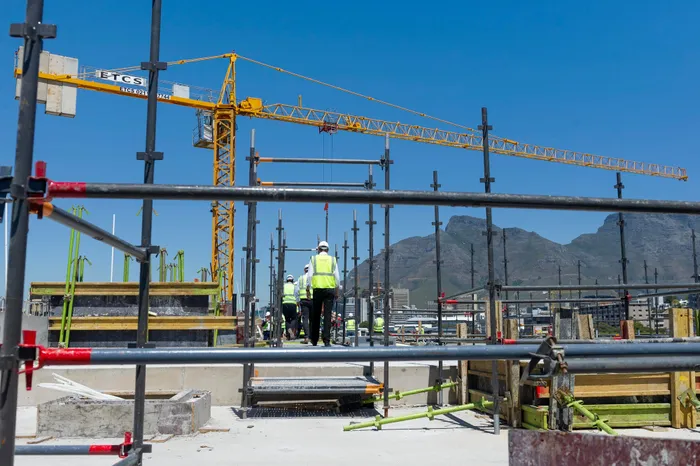Sharp decline in building confidence index clouds South African construction outlook
CONSTRUCTION

Data from FNB/BER Building Confidence Index showed that main contractor confidence fell to 35 in 2Q2025 – the lowest level since 3Q2022.
Image: David Ritchie/Independent Newspapers
The FNB/BER Building Confidence Index has taken a significant hit, plunging five points to a troubling 36 in the second quarter of 2025 after a modest gain in the first quarter.
The Index released on Monday characterises a construction industry at a crossroads, where the prospects of a recovery are overshadowed by a consistent drag from the residential sector.
This latest reading revealed that nearly 65% of respondents in the construction sector expressed dissatisfaction with the current business conditions, raising red flags for the sector's health as the market grapples with both residential and non-residential challenges.
Amid these struggles, the sentiment surrounding main contractors has reached its lowest point since the third quarter of 2022, dropping to a dismal 35. The decline has been primarily driven by an ongoing downturn in the residential sector, which has seen a dramatic drop in activity.
Data from Statistics South Africa (Stats SA) indicates that real spending on residential buildings plummeted by 8.4% year-on-year in the first quarter of 2025.
“The residential building sector is under pressure,” remarked Siphamandla Mkhwanazi, senior economist at FNB.
“Respondents noted a deterioration in activity and overall profitability. Moreover, a deterioration in order books points to continued strain on activity over the short term.”
While the residential segment is faltering, the non-residential building sector has shown some resilience, remaining above the long-term average.
According to Mkhwanazi, the non-residential building sector is now outperforming the residential building market significantly in terms of growth. He said this variance can be attributed to a low base caused by years of stagnation and a tangible recovery in demand for industrial and office space.
Despite the overall dip in activity, there are glimmers of hope within the industry. The confidence index associated with architects remains significantly above average for the second consecutive quarter, although their business confidence remains stuck at a subdued 38.
Meanwhile, sentiments among quantity surveyors have surged to 50, their highest level since the second quarter of 2017, buoyed by increased activity.
“Work at the start of the building pipeline is clearly gaining momentum. However, like with current activity, it seems as if it is largely focused on the non-residential sector,” Mkhwanazi said.
“Moreover, any progress in terms of building activity will be stifled by long delays in project approvals and client payments.”
Nevertheless, the construction landscape is not without its complications. Long delays in project approvals and client payments are stifling potential progress, rendering the industry's recovery tentative at best.
The downturn in confidence among hardware retailers has been particularly striking, as they experienced the most significant decline this quarter, shedding 24 points. This downturn came after last quarter's substantial increase in confidence and is attributed to deteriorating profitability despite robust sales volumes.
Mkhwanazi cautioned that while retailers were optimistic about sales in the next quarter, the factors driving sales growth recently may wane, resulting in potential underperformance in the latter half of 2025.
“Although hardware retailers are upbeat about sales next quarter, it is useful to remember that some of the factors that contributed to better sales in the preceding two quarters, particularly the consumer income windfall from the two-pot retirement system, will likely be less pronounced going forward,” Mkhwanazi said.
“This could lead to a disappointing outcome in the second half of 2025, despite the recent interest rate cut by the South African Reserve Bank.”
In a contrasting twist, building material manufacturers reported a confidence increase, albeit amid a backdrop of declining domestic and export sales.
“The increase in work at the start of the building pipeline (architects and quantity surveyors) suggests that building construction activity should improve over the short to medium term,” said Mkhwanazi.
“However, this conflicts with the weaker order books reported by residential builders. Also worth noting, is that the extent to which this is realised in terms of work will depend on further improvements in economic growth and building demand.”
BUSINESS REPORT